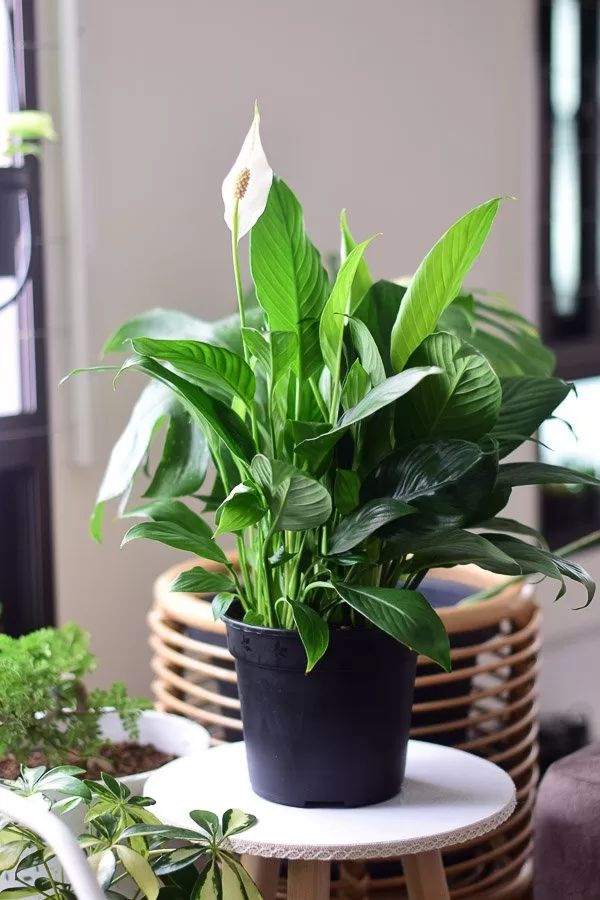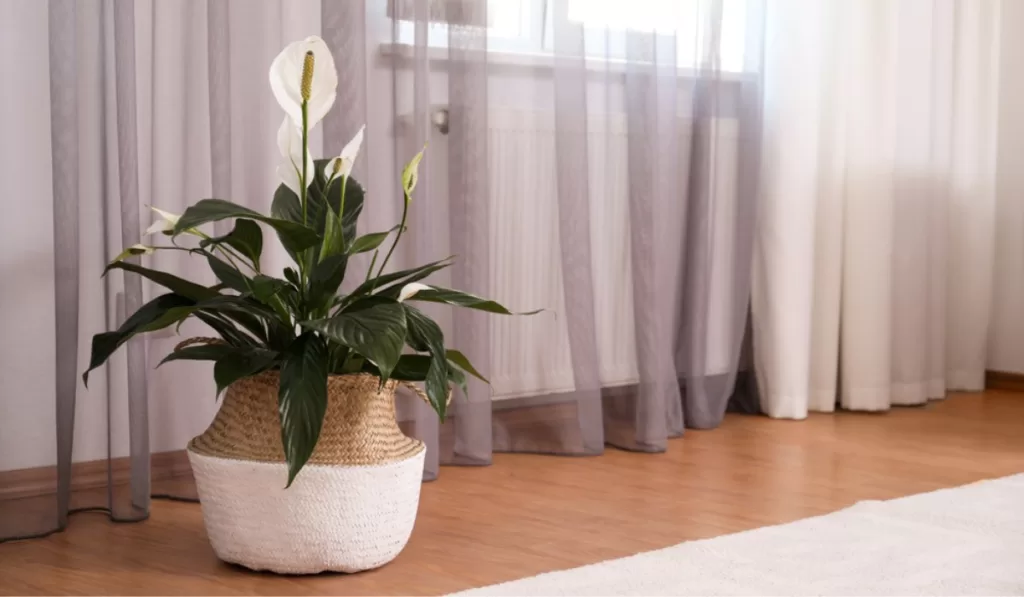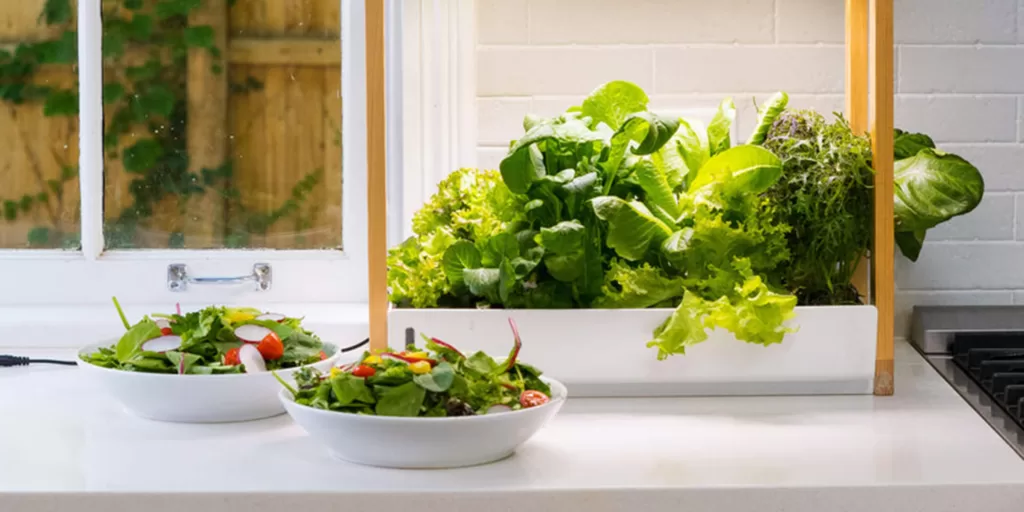Peace lilies prefer low to medium light levels, so they are well-suited to rooms with indirect sunlight, such as living rooms and bedrooms. They also like high humidity, so placing a peace lily in a bathroom or kitchen can be beneficial. Keep the soil moist but not waterlogged, and avoid placing the plant near drafts or air conditioning vents.
Table of Contents
How do I get my peace lily to bloom?
Peace lilies typically bloom in the spring and summer months, but can bloom at other times depending on the conditions they are kept in. To encourage blooming, ensure that the plant is getting the right amount of light and water, and that the temperature is not too cool. Peace lilies also benefit from being fertilized every 4-6 weeks during the growing season with a balanced, water-soluble fertilizer. Additionally, providing the plant with high humidity can also help promote blooming.
How many times a year does a peace lily bloom?
Peace lilies can bloom multiple times a year, depending on the care and growing conditions. They typically bloom in the spring and summer months, but with proper care, they can also bloom in fall and winter. Peace lilies can bloom for several weeks at a time, and then typically go dormant for a period before blooming again. If a peace lily is not blooming, it may be due to a lack of proper care or environmental conditions.

How do I make my peace lily bushy?
To make your peace lily bushier, you can follow these steps:
- Prune the plant: Pinch off the tips of the leaves to encourage bushiness. This will also promote branching and new growth.
- Provide enough light: Peace lilies prefer low to medium light levels. Place the plant in a room with indirect sunlight, or provide a grow light if the room is too dark.
- Fertilize regularly: Feed your peace lily every 4-6 weeks during the growing season with a balanced, water-soluble fertilizer.
- Provide enough water and humidity: Keep the soil moist but not waterlogged, and provide the plant with high humidity.
- Repotting: If your peace lily is pot bound, it will not be able to grow any bigger. Repotting it to a slightly larger pot will give it room to grow and become bushier.
- Be Patient: Peace lilies grow slowly, so be patient, and don’t expect to see drastic changes overnight.
By providing the right conditions for the peace lily to thrive, it will be able to grow bushier over time.
Why is my peace lily not flowering?
There can be several reasons why a peace lily is not flowering:
- Lack of light: Peace lilies prefer low to medium light levels. If the plant is not getting enough light, it may not produce flowers.
- Temperature: Peace lilies prefer temperatures between 60-85F, if the temperature is too low, it may inhibit blooming.
- Lack of fertilization: Peace lilies benefit from being fertilized every 4-6 weeks during the growing season with a balanced, water-soluble fertilizer.
- Drought or over-watering: Peace lilies prefer to have consistently moist soil, but not to be waterlogged. Overwatering or drought can cause the plant to go dormant and not produce flowers.
- Age of the Plant: Peace lilies need to be mature enough to produce flowers, if the plant is too young, it may not bloom yet.
- Pests or diseases: Pests or diseases can affect the plant’s ability to produce flowers. Check for any signs of pests or diseases, and treat accordingly.
If you have addressed all the above and the peace lily still not blooming, it may be that the plant has reached its blooming cycle and will bloom again in the future.

Will an overwatered peace lily recover?
It is possible for an overwatered peace lily to recover, but it depends on the extent of the damage caused by the overwatering. If the roots of the plant have become waterlogged and have begun to rot, the plant may not be able to recover.
To help an overwatered peace lily recover:
- Remove the plant from the soil and gently shake off any excess soil.
- Inspect the roots for any signs of rot. If the roots are brown and mushy, they may be beyond recovery.
- Cut away any rotted roots with a clean, sharp pair of scissors or pruning shears.
- Allow the remaining healthy roots to dry out for a few hours.
- Repot the plant into fresh, well-draining potting mix.
- Water the plant sparingly, only when the top inch of soil is dry to the touch.
It may take some time for the plant to recover, and it may not produce flowers for a while. With proper care, an overwatered peace lily can recover and continue to grow.
Also, it’s important to note that the recovery process will depend on the severity of the overwatering and the condition of the plant, but in some cases, the plant may not recover.
Are peace lilies just for funerals?
Peace lilies are a common funeral flower, but they are also popular for many other occasions. They are often given as a gift for birthdays, housewarming, or as a way to express sympathy. Peace lilies are also popular as indoor plants due to their lush green foliage and white blooms. They are known for their air-purifying properties, thus they are good plant to have in your home. They are also relatively low maintenance, making them a good choice for people who do not have a lot of experience with houseplants.
Peace lilies can also be used in floral arrangements, wedding bouquets and other decorative purposes. They are often used in hospitals, offices and other commercial spaces because they are easy to care for, and they are known to purify the air.
In short, Peace lilies are not just for funerals, they are a popular choice of plant for many different occasions and settings.
Why do you give someone a peace lily?
People give peace lilies as gifts for a variety of reasons. Some of the most common reasons include:
- To express sympathy: Peace lilies are often given as a way to express condolences or sympathy in the event of a loss or bereavement.
- To celebrate new beginnings: Peace lilies are also given as a way to celebrate new beginnings, such as the birth of a child or a new home.
- To express love and appreciation: Peace lilies are often given as a way to express love and appreciation, such as on Valentine’s Day or as a birthday gift.
- To improve air quality: Peace lilies are known for their air-purifying properties and are often given as a way to improve the air quality in a space.
- To add greenery to a room: Peace lilies can be used to add greenery to a room and make it look more inviting and welcoming.
- As a decorative element: Peace lilies are also used as a decorative element in floral arrangements, wedding bouquets, and other decorative purposes.
In summary, Peace lilies are often given as a symbol of peace, love, and purity, and they are a popular choice for many different occasions and settings.

Do peace lilies like to be root bound?
Peace lilies do not necessarily prefer to be root bound, but they can tolerate it for a period of time. In fact, it is recommended to repot your peace lily once it becomes root bound. Root bound means that the roots of the plant have grown to fill the entire pot and have started to circle around the inside of the pot, this can limit the plant’s growth and affect its health.
When you notice that the roots have grown out of the drainage holes in the bottom of the pot or if you see roots growing out of the soil on the surface, it is time to repot the peace lily. Make sure to use a pot that is one size larger and use a well-draining potting mix. Repotting will give the plant more room for the roots to grow and will also refresh the soil.
In general, it is important to give peace lilies the right amount of space to grow, and repotting the plant when it becomes root bound will help ensure that it continues to thrive.
Do you water peace lily from the top or bottom?
It is generally recommended to water peace lilies from the bottom. This means that instead of pouring water directly onto the soil, you should place the pot in a tray or saucer filled with water, allowing the plant to absorb the water through the drainage holes in the bottom of the pot. This method of watering is known as “bottom watering” or “bottom watering.”
When bottom watering, it is important to make sure that the pot is sitting in the water and not on the saucer or tray, and also to ensure that the pot has drainage holes at the bottom to avoid waterlogging the roots and causing root rot.
Bottom watering allows the soil to become evenly moist, and allows the roots to absorb the water they need. This method is particularly good for peace lilies as they prefer to be kept consistently moist, but not soggy, and bottom watering ensures that the water goes directly to the roots, avoiding wetting the leaves which can cause leaf spots.
Additionally, it is important to keep an eye on the water level in the tray, and remove the pot from the tray after about 15-20 minutes, or once the water is absorbed, so that the plant does not sit in water for too long.
Can you water peace lilies with coffee?
It is not recommended to water peace lilies with coffee. While coffee may contain some beneficial compounds for plants, such as nitrogen, phosphorus, and potassium, it also contains caffeine, which can be toxic to many plants. In addition, coffee can also be quite acidic, and peace lilies prefer a neutral to slightly acidic soil pH (around 6-7) .
Also, watering with coffee can also add other compounds that might not be beneficial for the plant, such as sugar, cream, or artificial sweeteners. These can change the pH of the soil and can cause nutrient imbalances, leading to stunted growth or other issues.
It is best to stick with plain, clean water when watering peace lilies. Watering with coffee or any other liquids can lead to an imbalance in the environment that the plant needs to grow. If you want to add any other substances to the soil, it is better to use a fertilizer that is specially formulated for peace lilies or other indoor plants.

Can you water a peace lily with ice cubes?
It is not recommended to water a peace lily with ice cubes. Peace lilies prefer to be kept consistently moist, but not soggy, and watering with ice cubes can make it difficult to provide the right amount of water. Ice cubes will take a long time to melt and can cause the soil to become too dry in the meantime.
Additionally, when the ice cubes melt, the sudden influx of cold water can shock the roots of the plant, which can lead to stress and damage. Peace lilies are tropical plants and prefer warm temperatures. Watering with ice cubes can cause the roots to become too cold and can lead to damage or death of the plant.
It is best to stick with plain, room-temperature water when watering peace lilies. Watering with ice cubes can lead to an imbalance in the environment that the plant needs to grow. It is better to water your peace lily when the top inch of soil is dry, and use tepid water, not cold or hot, to provide the best environment for the plant to thrive.
Is it OK to have a peace lily in your bedroom?
It is generally considered safe to have a peace lily in your bedroom. Peace lilies are known for being good air purifiers, as they can remove toxins such as benzene, formaldehyde, and trichloroethylene from the air. This can be beneficial for the air quality in your bedroom and may help improve your overall health.
However, there are a few things to keep in mind when having a peace lily in your bedroom.
- Make sure to place the plant in a spot where it will receive the right amount of light. Peace lilies prefer bright, indirect light, so avoid placing it in a spot that receives direct sunlight.
- Be aware that peace lilies can be toxic to pets if ingested, so if you have pets that might be tempted to chew on the leaves, it might be better to place the plant in a spot where they can’t reach it.
- Make sure to keep the plant’s leaves clean, as dust can accumulate on the leaves, which can affect the plant’s ability to photosynthesize and can also make the air in your bedroom less healthy.
Overall, a peace lily can be a great addition to your bedroom, providing both beauty and air-purifying benefits. As long as you keep in mind the plant’s light and moisture needs and also keep it away from pets, it can be a good choice for your bedroom.
How far away from a window should a peace lily be?
Peace lilies prefer bright, indirect light, so it is best to place them near a window that receives indirect sunlight. This means that the plant should be placed within a few feet of a window, but not in direct sunlight. Direct sunlight can scorch the leaves and cause the plant to dry out.
A good rule of thumb is to place the peace lily about 3-5 feet away from a window, depending on the intensity of the light. If the light is very bright, you may want to place the plant a bit farther away from the window to avoid direct sunlight. If the light is less intense, you may be able to place the plant closer to the window.
It’s also worth noting that peace lilies will tolerate low-light conditions, but they will not flower in low-light. If you notice your peace lily is not blooming, it could be the lighting conditions in your room.
It is also important to monitor the moisture level in the soil, peace lilies prefer to be kept consistently moist but not soggy. It is a good idea to check the soil moisture with your finger or a moisture meter before watering.

What kind of fertilizer do peace lilies need?
Peace lilies are relatively low-maintenance plants and do not require frequent fertilization. However, if you want to encourage growth and blooming, you can fertilize your peace lily during the growing season.
The best fertilizer for peace lilies is one that is high in phosphorus, which is the middle number on a fertilizer ratio, such as 10-10-10 or 15-30-15. The phosphorus will encourage blooming and root growth.
A slow-release fertilizer or a liquid fertilizer can be applied according to the package instructions. A balanced, water-soluble fertilizer, such as 20-20-20, can be applied every 4-6 weeks during the growing season. Or, if you prefer a slow-release fertilizer, you can apply it once every 2-3 months during the growing season.
It’s worth noting that over-fertilization can cause brown leaf tips and burn the roots, so it is best to use a light hand and not to overdo it. Also, it is important to avoid fertilizing your peace lily during the dormant period, which is typically in the winter.
It’s also important to note that Peace Lilies will do well with low fertility, so don’t feel like you have to fertilize all the time, if your plant is healthy, you can skip fertilizing.
Should peace lily be water from top or bottom?
Peace lilies can be watered from both the top and the bottom, but bottom watering is generally considered the preferred method.
Bottom watering involves placing the pot in a tray or saucer filled with water and allowing the plant to absorb the water through the drainage hole in the bottom of the pot. This method allows the plant to take in water as needed, and can help prevent over-watering, which is a common problem with peace lilies.
When watering from the top, it’s important to make sure that the water does not sit on the leaves or in the crown of the plant for long periods of time, as this can cause the leaves to yellow and rot. Water the soil directly and wait for the water to be absorbed by the soil before you put the pot back in its saucer.
It’s also important to monitor the soil moisture level, peace lilies prefer to be kept consistently moist but not soggy. It is a good idea to check the soil moisture with your finger or a moisture meter before watering.
Bottom watering is a great way to ensure that the soil stays consistently moist and that the plant gets the water it needs without the risk of over-watering.
Should I cut the brown tips off my peace lily?
If the brown tips on your peace lily are dry and brittle, it is generally safe to trim them off with a pair of scissors or pruning shears. This will help to maintain the plant’s overall health and appearance.
However, before you trim off the brown tips, it’s important to first determine the cause of the browning. Brown tips on peace lilies can be caused by a number of factors, including:
- Over-watering or underwatering
- Exposure to cold drafts or dry air
- Lack of humidity
- Fertilizer burn
- Pests or diseases
If you determine that brown tips are caused by over-watering or underwatering, adjust your watering schedule accordingly. If the brown tips are caused by dry air, try increasing the humidity around the plant, or if the brown tips are caused by pests or diseases, treat the plant accordingly.
It’s also important to note that peace lilies are sensitive to fluoride and chlorine which can be found in tap water, it is best to use purified or distilled water for your peace lily.
In general, it’s a good idea to trim off brown tips on a regular basis to keep the plant looking its best. But make sure that you’re addressing the underlying cause of the brown tips as well.






